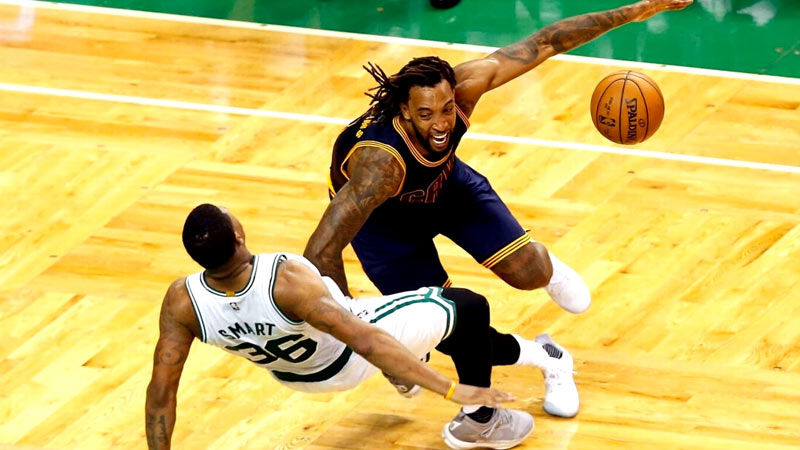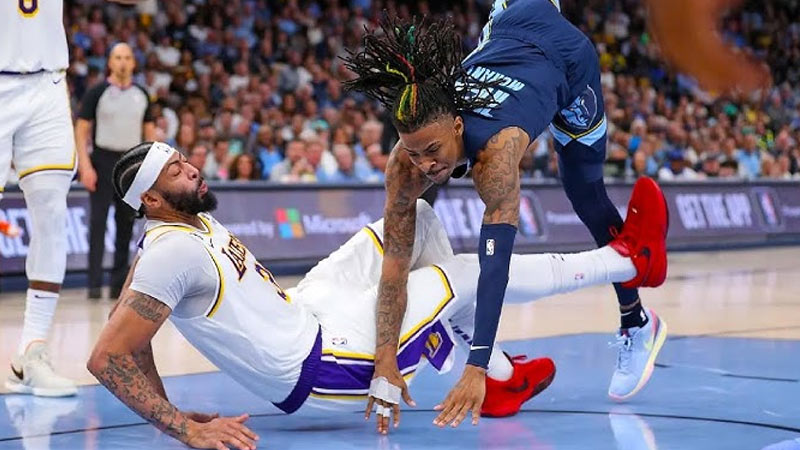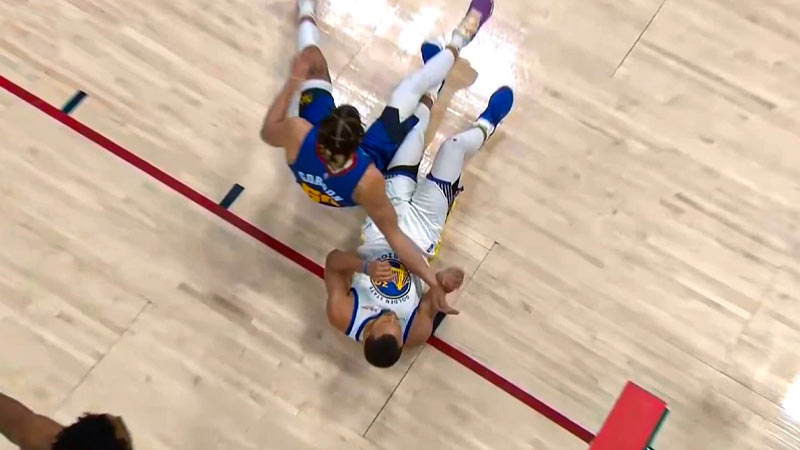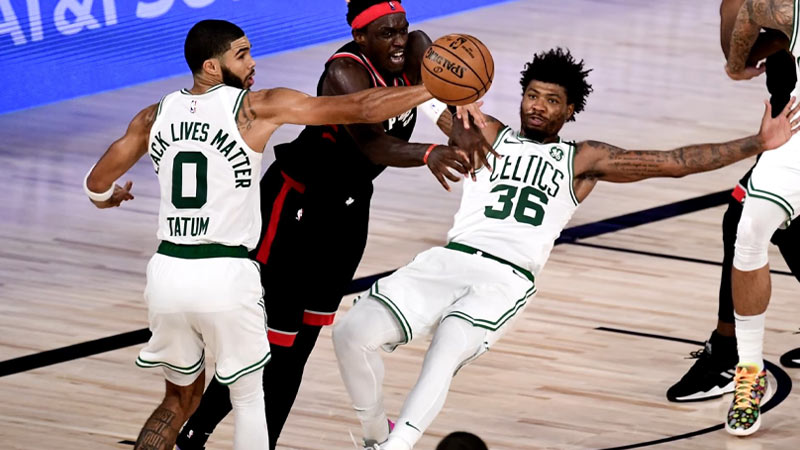Basketball is a fast-paced and dynamic sport that involves numerous rules and fouls. One common foul that players and fans often encounter is the charging foul.
The concept of a charging foul is crucial for both players and spectators, as it plays a significant role in determining possession and impacting the flow of the game.
In this article, we will delve into the details of what a charging foul is, when it occurs, the consequences it carries, and how it differs from a blocking foul. So, Stay tuned.
What is a Charging Foul in Basketball?
In the fast-paced and physical game of basketball, a charging foul is a crucial aspect of the sport that helps maintain fairness and protect the defensive players. Here’s a closer look at what a charging foul entails:
A charging foul, also referred to as an offensive foul, occurs when an offensive player initiates contact with a defender who has established a legal guarding position. It is called a charging foul because the offensive player is charged with the violation.
Contact and Guarding Position
To understand a charging foul, it’s important to recognize the concept of contact and a legal guarding position. Contact refers to any physical interaction between players, while a legal guarding position means the defender has established a stationary or set position on the court.
Offensive Player Initiating Contact
In a charging foul, the offensive player is deemed responsible for initiating contact with the defender.
This can happen in various ways, such as by driving aggressively towards the defender, using physical force to push through, or by not changing their path when the defender is in a legal guarding position.
The objective of the Charging Foul Rule

The primary objective of the charging foul rule is to prevent offensive players from unfairly barreling through defenders and gaining an advantage through physical force. It aims to promote fair play and protect defensive players from reckless and dangerous collisions.
Importance of the Charging Foul
The charging foul is essential in maintaining a balance between offense and defense. It discourages offensive players from using their physical advantage to overpower defenders and provides an opportunity for defenders to hold their ground and protect the basket.
Impact on the Game
When a charging foul is called, it results in a turnover, meaning the offensive team loses possession of the ball.
This turnover can significantly impact the flow and momentum of the game, allowing the defending team to regain control and potentially create a scoring opportunity.
Player Safety
The charging foul rule also serves as a safety measure, protecting players from unnecessary collisions and potential injuries.
By penalizing offensive players for initiating contact with defenders in a reckless manner, the rule helps maintain a safer playing environment.
Refereeing and Judgment
Determining whether a charging foul has occurred can sometimes be subjective and require the judgment of referees.
The officials must assess the movement of the offensive player, the positioning of the defender, and the timing of the contact to make an accurate call.
Coaching and Strategy
Coaches often emphasize teaching players how to avoid charging fouls and focus on offensive strategies that involve skillful maneuvers, quick changes of direction, and creating separation from defenders without initiating contact.
Minimizing charging fouls can contribute to the team’s success and efficiency on offense.
When Does A Charging Foul Happen?

A charging foul in basketball occurs when specific conditions are met, involving the positioning and actions of both the defender and the offensive player. Let’s break down the criteria for a charging foul:
Legal Guarding Position
To initiate a charging foul, the defender must establish a legal guarding position. This position can be achieved by either being stationary or moving laterally.
The defender must have both feet on the ground and be facing the offensive player. By establishing a legal guarding position, the defender gains the right to hold their ground and protect their position.
Offensive Player’s Responsibility
The offensive player, who is in possession of the ball, has a responsibility when attempting to drive toward the basket. For a charging foul to occur, the offensive player must be moving in a direct line toward the defender.
If the offensive player veers off their path or changes direction, it may result in a blocking foul instead of a charging foul.
Contact
The critical element in a charging foul is the contact between the offensive player and the defender. The contact is usually initiated by the offensive player, who is attempting to drive past the defender and create scoring opportunities.
However, for a charging foul to be called, the defender must maintain their legal guarding position throughout the contact.
If the defender moves into the offensive player’s path or fails to establish a legal guarding position, it may result in a blocking foul being called instead.
It’s important to note that charging fouls requires the defender to establish their position before the offensive player initiates the contact.
If the defender is still moving or has not established their legal guarding position, the foul may be considered a blocking foul instead.
Consequences of Charging Foul

When a charging foul is called, several consequences follow:
Loss of Possession
The team committing the charging foul loses possession of the ball. The opposing team is awarded a turnover and gains the opportunity to take control of the ball and transition to offense.
Personal Foul
The offensive player who commits the charging foul is assessed a personal foul. In basketball, players accumulate personal fouls, and after a certain number (usually five), they are disqualified from the game.
Team Foul
The charging foul also counts as a team foul. Team fouls are tracked throughout the game, and after a specific limit (usually four or five), the opposing team enters the bonus, allowing them to shoot free throws on subsequent non-shooting fouls.
Charging vs. Blocking Foul in Basketball
In basketball, charging and blocking fouls are two common types of personal fouls that involve player contact. These fouls are called by referees to maintain fair play and safety on the court. Let’s break down the differences between charging and blocking fouls:
Charging Foul:
- Offensive Player’s Responsibility: A charging foul is called when an offensive player with the ball initiates contact with a defensive player who has established a legal guarding position.
- Establishing Legal Guarding Position: To establish a legal guarding position, the defensive player must have both feet on the floor and be facing the offensive player before contact is initiated.
- Offensive Player’s Movement: The offensive player must be in control of their movement when they make contact with the defender. If the offensive player charges into the defender, it’s a foul.
- Penalty: When a charging foul is called, it results in a turnover, and possession of the ball is awarded to the opposing team.
Blocking Foul:
- Defensive Player’s Responsibility: A blocking foul is called when a defensive player is not in a legal guarding position, and they make contact with an offensive player who is in the act of shooting, passing, or dribbling.
- Legal Guarding Position: To establish a legal guarding position, the defender must be in place before the offensive player starts their shooting or passing motion.
- Defensive Player’s Movement: If the defender is moving laterally or backward at the moment of contact, or if they jump into the path of the offensive player, it may be called a blocking foul.
- Penalty: When a blocking foul is called, it results in free throws for the offensive player, depending on the situation (e.g., if the player was in the act of shooting). In some cases, it may also result in team fouls being accumulated.
FAQs
Can a charging foul be called if the offensive player is in the air?
Yes, a charging foul can still be called if the offensive player is in the air and makes contact with a defender who has established a legal guarding position before the offensive player leaves the ground.
Is there a restricted area for charging fouls in basketball?
In some basketball leagues, there is a restricted area near the basket where charging fouls cannot be called if the offensive player initiates contact while driving to the hoop.
This rule aims to protect offensive players from excessive contact near the basket.
Can a charging foul be called if the defender is moving?
No, a charging foul cannot be called if the defender is moving or not in a legal guarding position. In such cases, a blocking foul may be called against the defender.
Can a charging foul be called if the offensive player has not yet caught the ball?
No, a charging foul can only be called if the offensive player has control of the ball and is moving toward the defender.
Can a charging foul be called if the defender’s feet are not on the ground?
Yes, as long as the defender is in a legal guarding position, it does not matter if their feet are off the ground. The key factor is the established position and the offensive player’s responsibility to avoid contact.
Bottom Line
The concept of a charging foul is essential for basketball players and fans alike. This violation occurs when an offensive player makes contact with a stationary or set defender who has established a legal guarding position.
The consequences of a charging foul include loss of possession, a personal foul against the offensive player, and the potential for team fouls.
It is crucial to differentiate between charging and blocking fouls, as they have distinct outcomes and depend on the positioning and responsibility of the players involved.
By grasping the intricacies of a charging foul, players can make informed decisions on the court, and fans can appreciate the officials’ calls and the impact they have on the game. Good luck.







